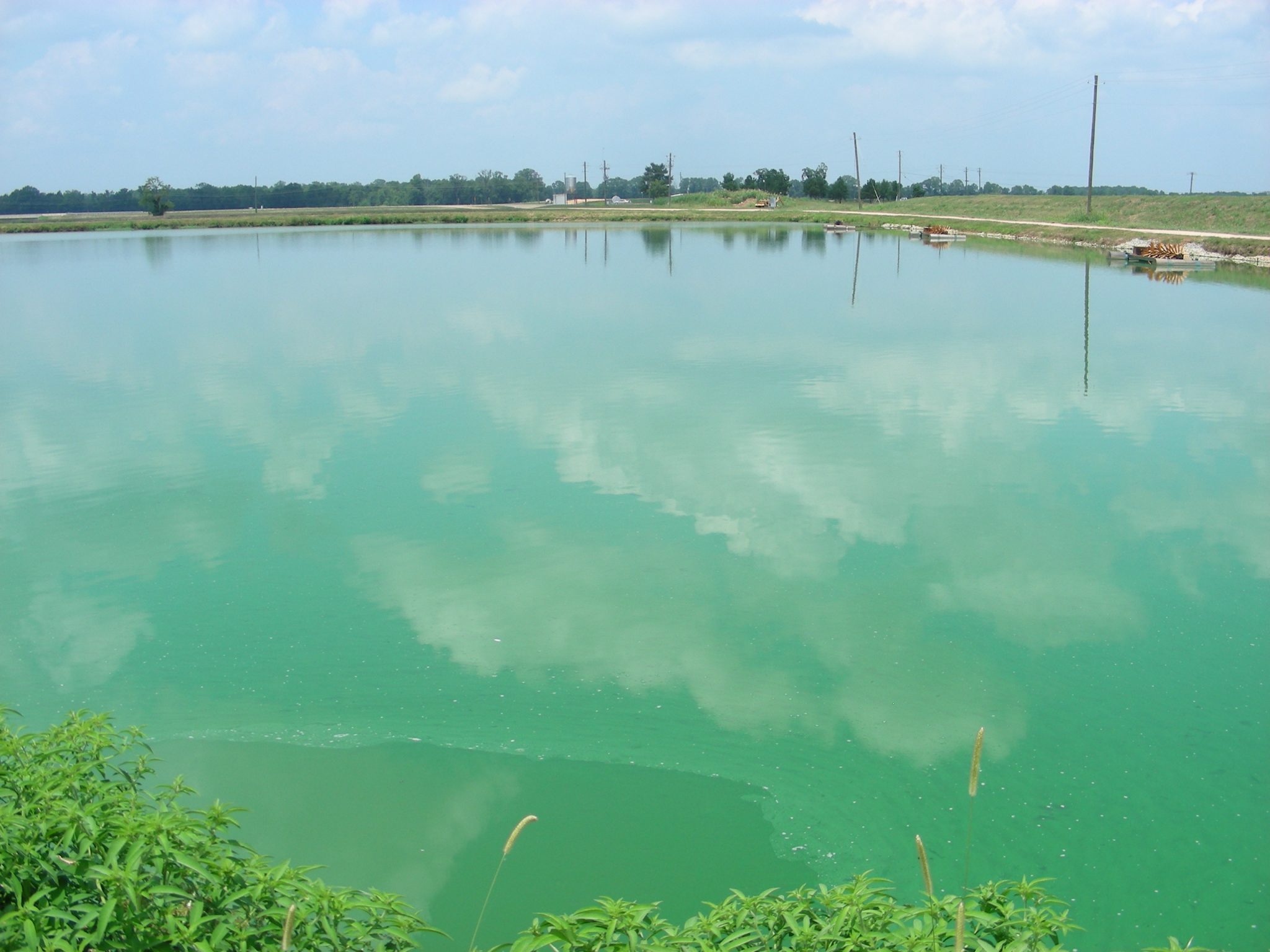
Citation
Buley, R. P., A. Kelly, L. Roy, E. G. Fernandez-Figueroa, M. Gladfelter, A. Belfiore, and A. E. Wilson. 2021. Controlling Microcystis blooms in Alabama catfish aquaculture. Alabama Cooperative Extension Fact Sheet ANR-2757. 5pp.
Abstract
Blue-green algae, also known as cyanobacteria, are microscopic organisms frequently found in aquaculture ponds in the southeastern United States.
Although blue-green algae are common in freshwater systems, blooms (dense accumulations of these organisms) can lead to serious issues for catfish farmers. Some, but not all, blue-green algae can produce compounds that are toxic to catfish or may lead to unwanted taste and odors in fish fillets. Bloom formations may also create low oxygen conditions at night or as cells decay following a crash in a bloom. Of the blue-green algal species in the southeast, Microcystis is among the most common and often leads to problems for catfish farmers.
Microcystis blooms often form distinctive Kelly green scums at the water surface (figure 1). Many other kinds of blue-green algae, other kinds of algae, and aquatic plants (such as duckweed or watermeal) form surface blooms or mats during certain times of the year that are army green or various other shades (figures 2a and 2b). So, more formal identification of the algae is needed. Microcystis can be identified using a microscope and is typically distinguishable as groups of small, circular cells (colonies) within a jelly-like mass (figures 3a and b). Your county Extension agent can assist in identification, if needed.